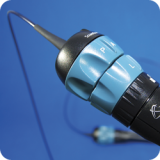Electrophysiology Catheter Reprocessing
The reprocessing industry has evolved substantially since its inception. Single-use devices (SUDs) now undergo highly technical and complex sorting, cleaning, testing, and validation methods. In order to gain FDA clearance to reprocess a SUD, like an EP catheter, it requires one to prove these devices are just as safe and absolutely equivalent to the original equipment manufacture (OEM) device.
In the late 1990’s, diagnostic electrophysiology (EP) catheters were reprocessed in the sterilization processing department (SPD) in order to reduce supply expenses. Few incidents of injury to the patient were reported; nevertheless, the OEMs began paying more attention. Today, the legal situation in Europe, North America and Australia is quite diverse. In some European countries, reprocessing is regulated or accepted if high quality/validated procedures are strictly followed (such as Germany). Other countries such as the U.K., France and Australia do not recommend reprocessing. In the U.S. and Canada, some centres reuse EP catheters that have been professional reprocessed by a third-party. This was likely due to big manufacturers successfully lobbing government to enact legislation to regulate reprocessing. U.S. and Canadian Hospitals are now forbidden to reprocess SUDs in-house, and third-party reprocessors became tightly regulated. The reprocessors that were left forced to invest fortunes to comply with new strict FDA guidelines. In Canada, Health Canada has followed the FDA’s lead.
To give an example of how equivalent a reprocessed device performs to an OEM device we can use the Soundstar 3D ultrasound mapping catheter as an example. Electrophysiologists are naturally more skeptical concerning the integrity of the device when the device is more complex. Dr. Mark Seifert, Director of Cardiac Electrophysiology from John C. Lincoln Health Network in Arizona, recently conducted a clinically reprocessing study for SoundStar catheters. He found that reprocessed SoundStar catheters function the same as brand new devices.
The key findings from the study were:
1. Reprocessed SoundStar 3D catheters are equivalent to original devices.
2. There were no consistent differences between new and reprocessed ultrasound catheters in accuracy of image registration.
It is likely that reprocessing companies are here to stay. In order to continue to spread awareness of reprocessing more studies should be conducted. This will help the healthcare community have a more positive perception of reprocessing and ensure reprocessing companies can continuously improve patient care.
At Elite Cardiology Group, we collect SUD EP catheters from almost every EP lab in Canada. We send these devices to third party reprocessors and pay hospitals a rebate per catheter. To learn more visit www.ecgmedical.com.


